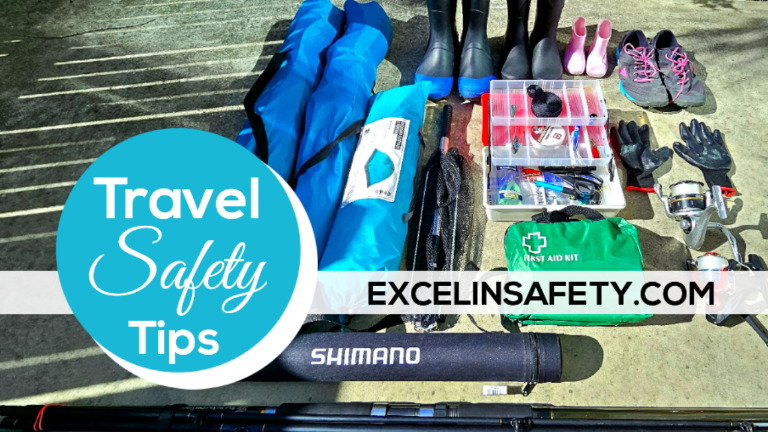Risk assessment is an essential process for identifying and evaluating potential hazards in the workplace. By conducting a thorough risk assessment, employers can identify potential risks to the health and safety of their workers and take steps to eliminate or control those risks. In this article, we explore the steps involved in implementing a risk assessment process in the workplace.
Identify Hazards
The first step in a risk assessment is to identify potential hazards in the workplace. This can be done by reviewing previous incident reports, conducting workplace inspections, and consulting with workers and their representatives.
Hazards can include anything that has the potential to cause harm, such as hazardous materials, equipment, and machinery, as well as physical, biological, or environmental hazards.
Assess Risks
Once hazards have been identified, the next step is to assess the level of risk associated with each hazard. This involves evaluating the likelihood and severity of harm that could result from exposure to the hazard.
There are various methods for assessing risk, including qualitative, semi-quantitative, and quantitative approaches. The method used will depend on the complexity of the hazard and the resources available for the assessment.
Determine Controls
The next step is to determine controls for eliminating or controlling the risks identified in the assessment. This involves selecting the most appropriate control measures based on the level of risk associated with the hazard.
Control measures can include engineering controls, administrative controls, and personal protective equipment. Engineering controls involve modifying the workplace or equipment to eliminate or reduce the risk. Administrative controls involve implementing policies and procedures to manage the risk, such as training and supervision. Personal protective equipment (PPE) involves providing workers with equipment such as safety goggles, gloves, or respirators to protect them from the hazard.
Implement Controls
Once control measures have been determined, the next step is to implement them in the workplace. This involves communicating the controls to workers and ensuring that they are properly trained and equipped to implement them.
It is also important to monitor the effectiveness of the controls and make any necessary adjustments to ensure that they are working as intended.
Review and Update
The final step in a risk assessment process is to review and update the assessment regularly. This involves reviewing the assessment whenever there are changes in the workplace, such as new equipment, processes, or procedures, as well as reviewing the assessment at regular intervals.
Regular review and updates ensure that the risk assessment remains relevant and effective in identifying and managing hazards in the workplace.
Benefits of Implementing Risk Assessment
Implementing a risk assessment process can provide numerous benefits to employers and workers. Some of the key benefits include:
Improved Workplace Safety
By identifying and managing hazards in the workplace, a risk assessment process can help to create a safer working environment for employees. This can reduce the risk of accidents and injuries and improve the overall well-being of workers.
Increased Productivity
A safe and healthy workplace can improve productivity by reducing the amount of time lost due to accidents and illnesses. By eliminating or controlling workplace hazards, workers can focus on their tasks without fear of injury or illness.
Compliance with Regulations
Many jurisdictions require employers to conduct risk assessments and implement controls to manage workplace hazards. By implementing a risk assessment process, employers can ensure that they are in compliance with relevant regulations.
Cost Savings
By reducing the risk of accidents and illnesses, a risk assessment process can help to reduce the cost of workers’ compensation claims, medical expenses, and lost productivity due to workplace injuries and illnesses.
Conclusion
Implementing a risk assessment process is an essential step in creating a safe and healthy workplace. By identifying and managing workplace hazards, employers can create a safer working environment for their employees, improve productivity, and reduce costs. The steps outlined in this article provide a framework for implementing a risk assessment process in any workplace, regardless of the industry or sector. By following these steps, employers can ensure that they are complying with regulations and protecting the health and safety of their workers.
It is important to note that implementing a risk assessment process is not a one-time task. Rather, it is an ongoing process that requires regular review and updates. As new hazards are identified or changes are made in the workplace, the risk assessment should be updated to reflect these changes. This ensures that the workplace remains safe and healthy for all employees.
In addition to the steps outlined above, there are several best practices that employers can follow when implementing a risk assessment process. These include:
Engage Workers
Workers are often the best source of information when it comes to identifying hazards in the workplace. Engaging workers in the risk assessment process can help to identify hazards that may have been overlooked and can help to ensure that the controls selected are appropriate and effective.
Use Multiple Assessment Methods
Different hazards may require different assessment methods. Using multiple assessment methods can provide a more comprehensive view of the hazards in the workplace and can help to identify risks that may have been missed using a single method.
Consider Human Factors
Human factors, such as fatigue, stress, and complacency, can play a significant role in workplace accidents and injuries. When assessing risks, it is important to consider how these factors may impact the likelihood and severity of harm.
Provide Training
Workers should be provided with training on the risks associated with their job tasks and the controls that have been implemented to manage those risks. This can help to ensure that workers understand the risks and are able to work safely.
Foster a Safety Culture
Creating a culture of safety in the workplace can help to ensure that workers are committed to working safely and that safety is a top priority for the organization. A safety culture can be fostered by providing leadership on safety issues, promoting open communication, and recognizing and rewarding safe behavior.
In conclusion, implementing a risk assessment process is essential for creating a safe and healthy workplace. By identifying and managing workplace hazards, employers can protect the health and safety of their workers, improve productivity, and reduce costs. The steps outlined in this article provide a framework for implementing a risk assessment process in any workplace, and by following best practices and engaging workers, employers can ensure that their risk assessment process is effective and ongoing.








Leave a Reply
You must be logged in to post a comment.